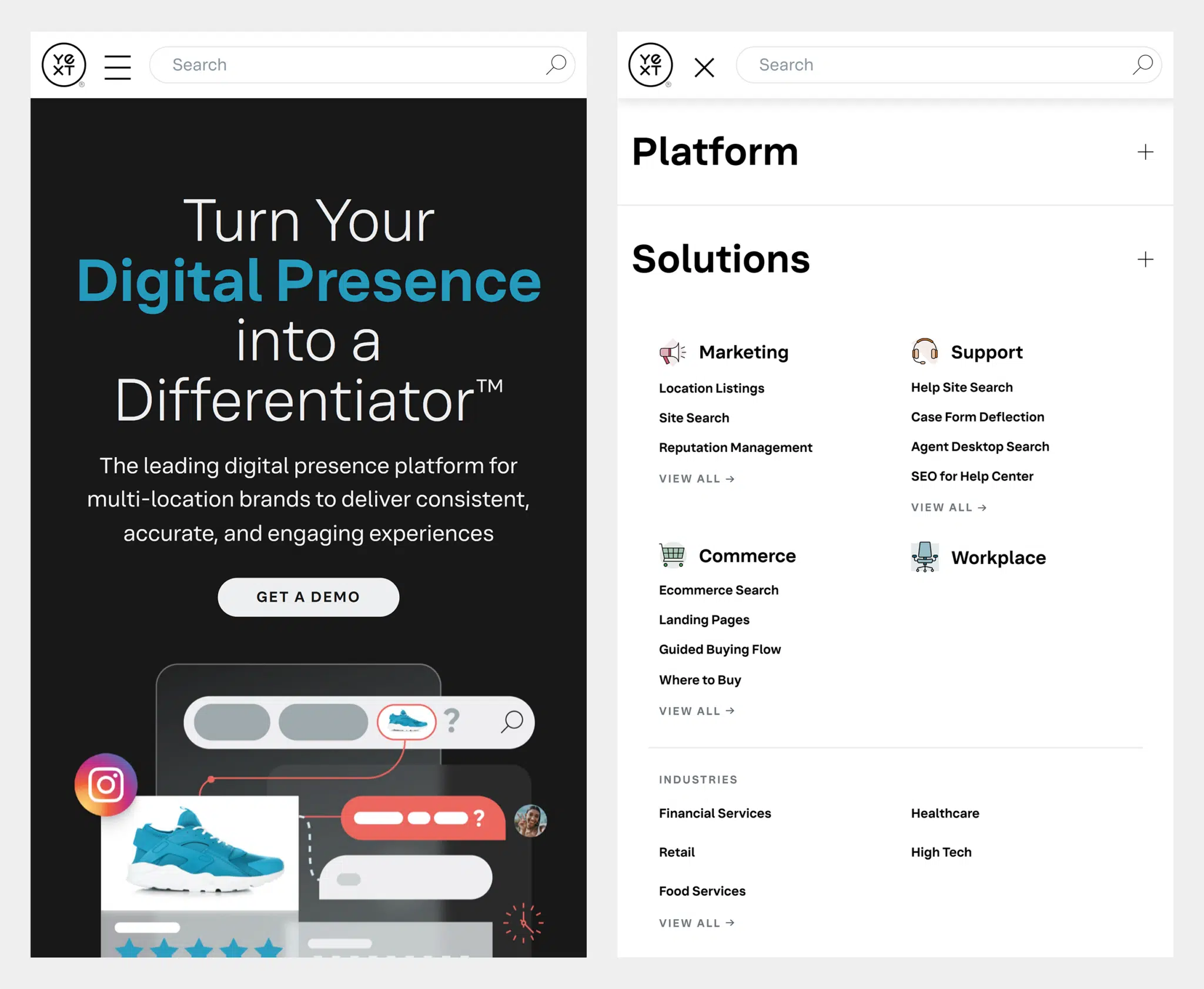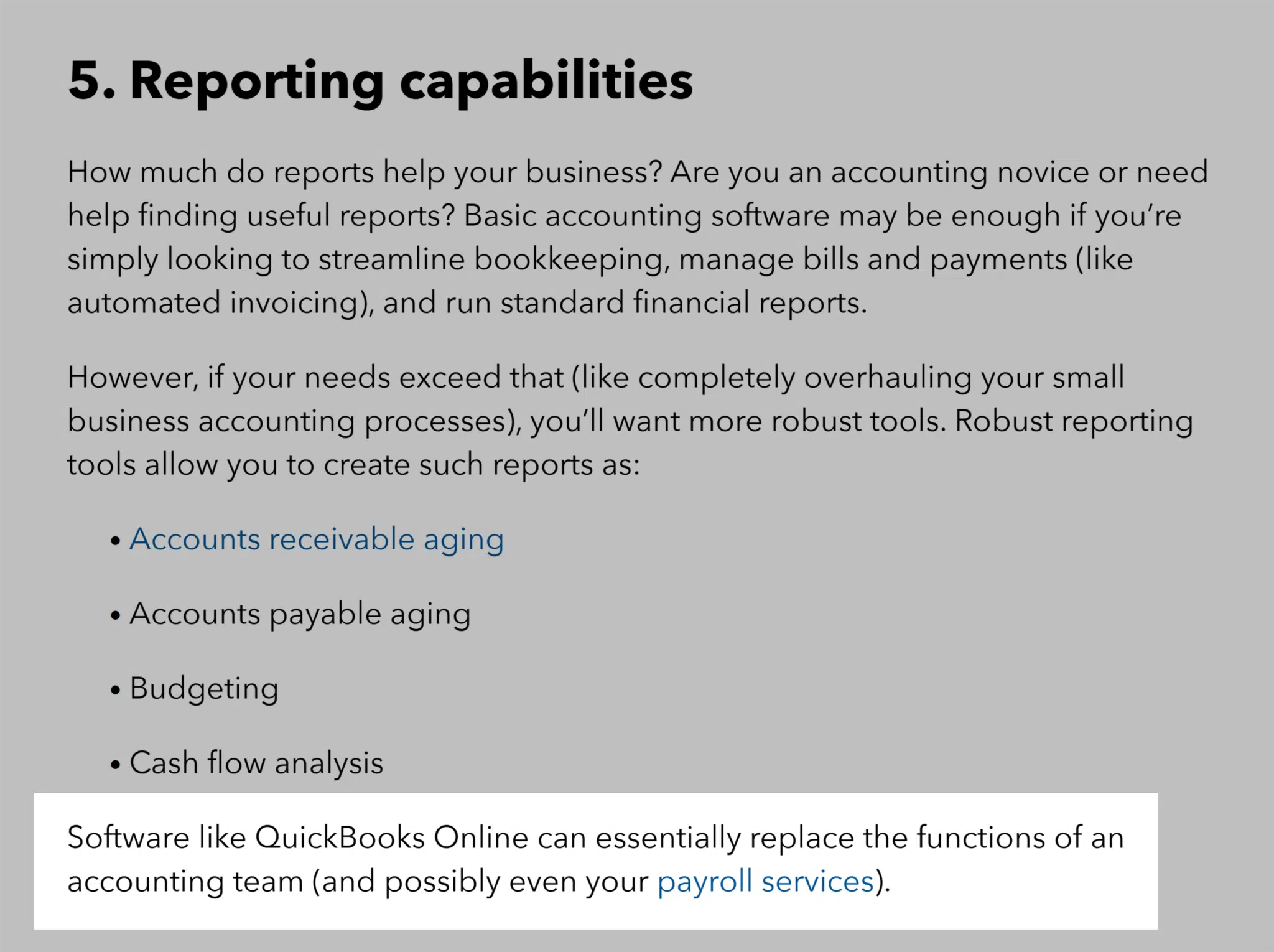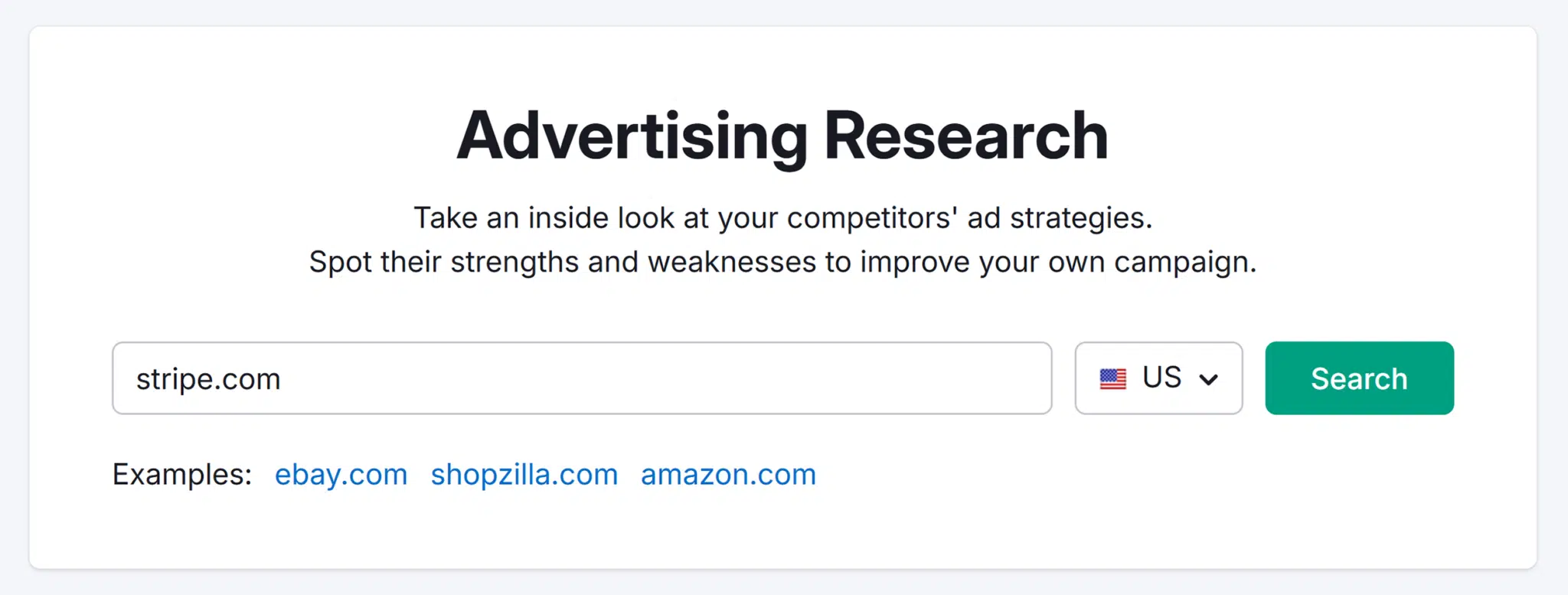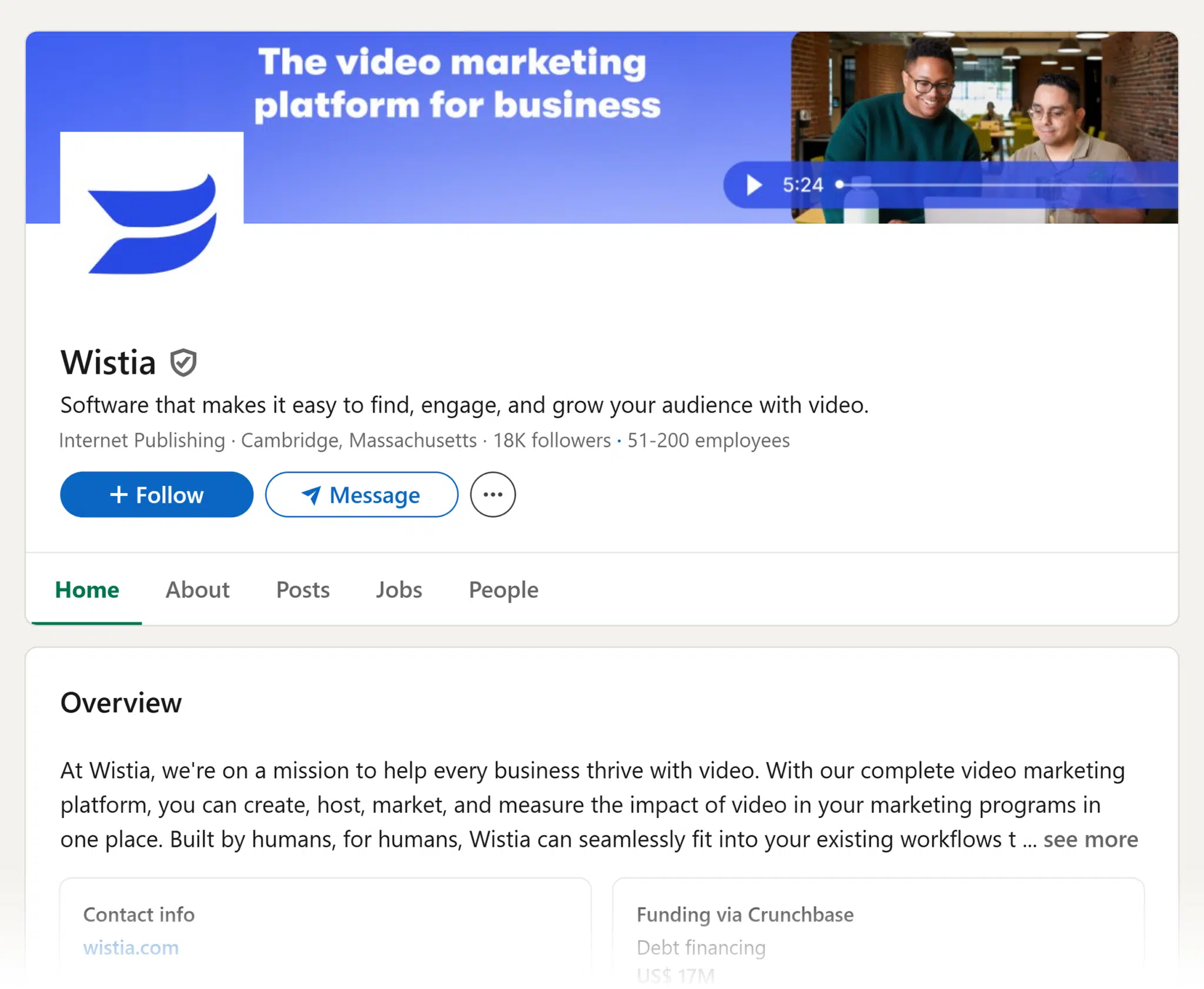Top B2B Digital Marketing Strategies for Business Growth
What Is B2B Digital Marketing?
B2B (business-to-business) digital marketing strategies help companies promote their brand to other businesses—their target customers—online.
B2B marketing differs from business-to-consumer (B2C) marketing, which sell to individuals rather than organizations.
Digital marketing is where 56% of B2B marketers spend their budget to promote their offering.
Why?
Because online marketing is critical in the B2B buyer’s journey. Businesses can discover products and research online before making purchasing decisions.
What are B2B marketing strategies?
B2B marketing strategies are the ways you choose to reach buyers inside of businesses to convert them into customers. Among them, B2B digital marketing strategies are those that happen online.
Why Is B2B Digital Marketing Important?
B2B digital marketing is an effective way to demonstrate the value of your products or services to potential buyers. And convert them.
This type of digital marketing can produce a high return on investment (ROI) when done right. For example:
- Pay-per-click (PPC) ads return $2 for every $1 spent on average
- Email marketing returns anywhere between $36 and $40 for every $1 spent on average
- Search engine optimization (SEO) could return anywhere from $2.75 to $7.48 for every $1 spent
These are just a few examples of B2B digital marketing strategies we’ll detail.
What Are the Benefits of B2B Digital Marketing Strategies?
B2B marketing strategies help you reach the right customers while factoring in their mindset. Many digital strategies allow you to reach potential customers on the job. Whether via their inboxes, social media feeds, or through search engines.
Prospective customers at work are more likely to research or make a decision on their next purchase. Versus during their free time at home.
11 Smart B2B Digital Marketing Strategies
1. Understand Your Target Audience
Your target audience is your ideal customer base. Knowing your target audience is a fundamental step to any marketing strategy—traditional or digital.
When researching your target audience for a digital marketing B2B strategy, work to understand where your audience is online. And the behavior they exhibit in different online spaces.
Note: Ultimately, B2B audience research is similar to B2C audience research. People within companies make decisions about what their businesses purchase.
Build a customer profile that includes demographics, online habits, interests, and behaviors to help you reach the right candidates.
Semrush’s Market Explorer analyzes audiences related to specific market segments and competitors. It can help you understand your targets’ demographics, socioeconomics, online behavior, and more.
In the tool, click the “Analyze Category” tab to research your market’s target audience.
Open the dropdown menu under “Business Category.” Scroll through the list or type a representative term for your business to see relevant industry suggestions. Click “Research a market.”

The Market Explorer “Overview” page will appear and include general information about your chosen market. Like the market share of competing businesses, number of domains in the space, their aggregated traffic each month, and more.
Click the “Audience” tab to learn more about the target audience in your business category.
Like “Demographics,” “Socioeconomics,” and “Behavior.”

Click “View Details” below each card to go deeper.
Head to the “Social Media,” section, which displays the channels your target audience visits most often. Ranging from most to least visited.

Note Engaging your audience on social media is a B2B digital marketing strategy we’ll discuss later. The social media stats in Market Explorer help you decide which platforms are worth using.
Just below “Social Media,” you’ll find a list of the most visited domains in the selected market under “Visited Domains.” Automatically filtered by “Match Score,” which indicates a domain’s level of relevance for the chosen market. You can also sort the list by clicking on “Traffic” or “Audience Overlap.”

Evaluate these domains to help you identify competitors, additional target audience interests, or other platforms that could benefit your strategy.
If you discover relevant competitors, analyze their individual audiences using One2Target.
Type in up to five competitor URLs in the tool’s search bar. Click, “Analyze.”

The tool will show the “Demographics” overview, with general information about the competitor’s audience, such as age and gender.
Select the “Behavior” tab to learn how that competitor’s audience behaves online.
Discover their interests (based on the sites they visit most) and the devices they use to browse online.

Market Explorer and One2Target help you decide which digital marketing channels to invest in.
Knowing people’s behavior and the sites they frequent can provide insights into their topics of interest.
2. Develop a User-Friendly Website
Your website is a core part of where you generate leads and build trust with potential customers. And ultimately where B2B buyers make purchases.
When B2B prospects visit your site, you want them to take action. That’s more likely to happen if your website is trustworthy, easy to navigate, mobile-friendly, and fast.
Take Yext, a B2B company that helps others manage information about their business on different online platforms.
The website copy instills trust by identifying Yext as a market leader. The call to action (CTA) is straightforward.

Responsive design makes the site easy to navigate on a mobile device.

The navigation changes so it’s user-friendly. And links are easy to click on a small screen.
One key part of this site’s user-friendliness is that it loads quickly across devices.
Forty-seven percent of consumers expect a website to load in two seconds or less. The probability of bounce almost triples if your page takes longer than three seconds to load, according to Google.
Check your site speed with Site Audit, a Semrush tool that analyzes your domain to identifty technical site issues.
Start by inputting your domain and clicking “Start Audit.”

Then, create a “Project Name” and click “Create project.”

Configure your basic site audit settings and click “Start Site Audit.”
Select if you want an email notification after Semrush is done analyzing your site.

Once the audit is complete, you’ll see the “Overview” tab with overall site metrics.
To find your site speed, click “View Details” under “Site Performance” in the “Thematic Reports” section.

To the left you’ll see a breakdown of your site’s “Page (HTML) Load Speed” and “Avg. Page (HTML) Load Speed.”

Ideally, all your pages should load in less than three seconds. If not, check out the recommendations under “Performance Issues.” Follow the suggestions to address problems and speed up your site.
3. Build a Solid Content Marketing Plan
B2B content marketing is another strategic approach to growing your B2B business. It involves consistently creating and distributing valuable, relevant content to a clearly defined audience.
Content marketing helps establish authority, grow trust, and convert new business online. Your marketing content comes in a variety of different formats, like:
- Articles
- Blog posts
- Case studies
- E-books
- Email campaigns
- Infographics
- Newsletters
- Podcasts
- Press releases
- Quizzes and surveys
- Slideshows
- Social media posts
- Videos
- Webinars
- Whitepapers
A good content marketing strategy includes several of the above.
Consider the below examples from customer service software solution Zendesk.
There are in-depth guides for customer experience professionals on the Zendesk company blog.

Its YouTube channel features everything from how-to product videos to interviews with other industry professionals.

Animated images appear in LinkedIn channel posts to promote customer success stories with real-life results.

Topic Research can help you generate ideas for your content. The Semrush tool gathers data from a variety of online sources, including websites, social media platforms, and search engine results. Providing insights into trending topics and popular content.
Enter a topic in the tool’s search bar, and click “Get content ideas.”

You’ll see ideas based on your search.
For example, Zendesk might want to create content on topics like “Customer Service Jobs” and “Competitive Advantage.”

Keep your ideas in a content calendar.
A content planning tool that typically includes information like publishing dates, c-ontent status, topic, content format, and more.

4. Create Valuable Content for Each Stage of the Buying Journey
Generally speaking, all customers go through three stages before purchase:
- Awareness: Becoming familiar with your company and product or service
- Consideration: Evaluating whether they need your product or service. If they decide they do, they may compare you with competitors.
- Decision: They opt to buy your product or services, resulting in a conversion

Create content that meets your target audience’s needs at each stage.
Take Intuit’s blog, which supports and informs on its primary product: accounting software for businesses of all sizes
The company blog has an accounting category that publishes content for each stage of the buyer journey.
For example, the article “Financial statements: What business owners should know” might be useful during awareness.
Here, Intuit doesn’t ask readers to download Quickbooks. Instead, it simply informs readers about one type of report Quickbooks produces. And educates them about why it’s important.

Another post showcases the reports Quickbooks produces for business owners. Because they’ve been convinced they need regular reporting.
At the end of the article, Intuit softly pitches Quickbooks.

Potential customers trying to decide which accounting software to purchase might be interested in the post titled “Accounting software selection: 7 factors to consider.”
The Quickbooks mentions are more obvious throughout the different “factors to consider.” Because readers on this page are likely at the decision point and ready to convert.

Create content at different stages of the buyer journey with multiple content types. Like videos, podcasts, and social media posts. To reach users with various learning styles.
5. Invest in Search Engine Optimization (SEO)
SEO is a set of practices aimed at improving a website’s visibility and ranking on search engine results pages (SERPs).
It’s crucial for B2B digital marketing because Google sends more traffic to websites than any other platform.
Out of all U.S. web traffic referrals from the top 170 sites, 63.41% were from Google.com.

Image Source: SparkToro
SEO includes optimizing your site’s content and structure for search engines.
How?
By targeting relevant keywords, creating high-quality content, and ensuring your site is user-friendly and technically sound.
Use Keyword Magic Tool to find relevant keywords to target.
Enter a seed keyword and an optional domain—for instance, “business consulting” and Deloitte. Click “Search.”
Tip: Semrush will use AI to analyze how closely your domain’s main themes align with potential topics for your site.

Keyword Magic Tool will display a list of possible keywords to evaluate as part of your SEO marketing strategy. The best ones are those with a high search volume but “Very Easy” or “Easy” to rank for.
Filter the list by adjusting your “Volume” and “KD %” parameters.

Click on any keyword to bring up the Keyword Overview.
A comprehensive keyword report that covers search volume, difficulty, intent, competition, related keywords, and SERP features. And helps you choose the most effective keywords to target.

6. Run Pay-Per-Click (PPC) Advertising Campaigns
Pay-per-click (PPC) ads are a form of online advertising that charge a fee each time someone clicks your ad. Driving traffic to your website.
PPC ads are an important digital marketing tool. Because you can target specific industries, decision-makers, and demographics. And nets higher-quality traffic and improved ROI.
PPC campaigns run on search, social media platforms, and other websites.
Search ads are among the most popular.
Succeeding in search starts with choosing the right keywords. Use Advertising Research to understand what your competitors are targeting.
Say you’re a finance startup that helps small businesses receive payments. You might consider Stripe a competitor.
In the tool, type in the URL and click “Search.”

The “Positions” tab gives an overview of your selected domains’ search PPC strategmmy. Like the number of keywords rival sites are bidding on, the traffic their ads generate, and the average monthly ad cost.

Scroll down for a full list of keywords your competitor has successfully ranked for in a PPC ad campaign.
Review the keywords, your competitor’s position, search volume, and the average price paid per click for each keyword.

To rank higher for these keywords, outbid your competitor.
For the best value-for-money PPC campaigns for your business, use keywords that drive high traffic for competitors at a low cost.
7. Grow an Email Subscriber List and Send Targeted Campaigns
Email marketing allows businesses to communicate directly with customers online. Contrary to social media platforms rely on complex and ever-changing algorithms to reach potential customers.
You can send targeted emails to customers at all buyer journey stages. For instance, customers in the awareness stage might respond to a thought leadership newsletter as they get to know your brand.
Here’s an example from Lenny’s Newsletter, a weekly advice column for marketers.

Email is also effective further down the funnel to notify customers about new products or sales.
This example from Passion Planner alerts subscribers to a mid-year sale:

8. Engage Audiences on Social Media
Social media is a powerful way to reach new customers online and grow your business. Rely on your audience research to choose the best social media platform for your audience.
But generally, LinkedIn reigns supreme for B2B.
Start by opening a company page.
Wistia, a video content creation platform, uses the LinkedIn company page to share valuable content. Like video insights and ungated webinars.

Social media is even more effective when company executives and employees use it to communicate with their audience.
Wistia CEO Chris Savage uses LinkedIn to post relatable stories about company growth, his interactions with customers, and thoughts on the direction of the industry.

Savage engages with his audience in the comments. Which builds trust and authority for both himself and Wistia.
9. Host and Promote Webinars
B2B companies must generate leads to drive sales growth. One way is to capture leads with gated assets. Which require users to provide an email address or other contact information to access.
This is known as lead capture.
Promoting and hosting webinars are an effective form of lead capture. Typically live digital events where attendees receive valuable information and can ask questions or interact with a topic expert.
To promote its new AI-powered creative tools, Adobe uses webinars as a lead generation tool.

10. Take Advantage of B2B Influencer Marketing
Influencer marketing is the practice of tapping into the audiences of influencers to market your business, products, or services.
You’d typically pay an influencer to share your product or service in a social media post.
For example, HubSpot sponsored a series with influencers on LinkedIn to promote its marketing certifications. The influencers went through the certification themselves and encouraged their followers to take them.

Adobe worked with influencers on Instagram to promote its new AI assistant. In this example, Corporate Natalie plugs the tools in one of her humorous videos.

Semrush’s Influencer Analytics app helps you identify, analyze, and manage influencers. By providing insights into your audience, engagement metrics, and content performance.
Use the tool’s AI-powered search to find the right influencers for your business. Type a relevant topic into the search bar—say, “AI tools”—and click “Create magic.”

The tool will generate a list of relevant influencers from YouTube, Instagram, Twitch, and TikTok based on an AI analysis of your topic.
Sort and filter the results by parameters like subscriber count, content quality, and more.

11. Measure Your Strategies
Regardless of which B2B digital marketing strategies you choose, measuring their effectiveness ensures no wasted marketing dollars.
Start by analyzing which tactics drive the most traffic to your website.
Use Traffic Analytics to get a complete overview of a domain and its online visibility.
Type your site’s URL in the search bar and click “Analyze.”

The tool’s “Overview” tab shows you high-level site metrics like “Visits,” “Unique Visitors,” “Pages / Visit,” and more. And identify which devices your audience uses to access your site.

Click the “Traffic Journey” tab to explore the channels and sites driving the most traffic to your website.
You’ll see an overview of your site’s acquisition sources, ranked by the amount of traffic they send.

In this example, we analyzed GitHub, a web-based platform used primarily for version control and collaborative software development.
The well-known brand unsurprisingly receives a lot of direct traffic. Referral and organic search also drive a lot of traffic to the site compared to PPC, organic social, and email.
Knowing what works for your business helps you evaluate and fine-tune your strategic efforts for improved traffic and ROI.
Craft Your B2B Digital Marketing Strategy for Success
There are lots of strategies designed to help B2B organizations succeed.
Choose a combination of ones that resonate best with your audience. And get you in front of customers at the right stage of their buying journey.
Then, monitor your target audience’s online behavior and engagement to track the success of your strategic efforts. Semrush can help at every step. Sign up for a free trial today.